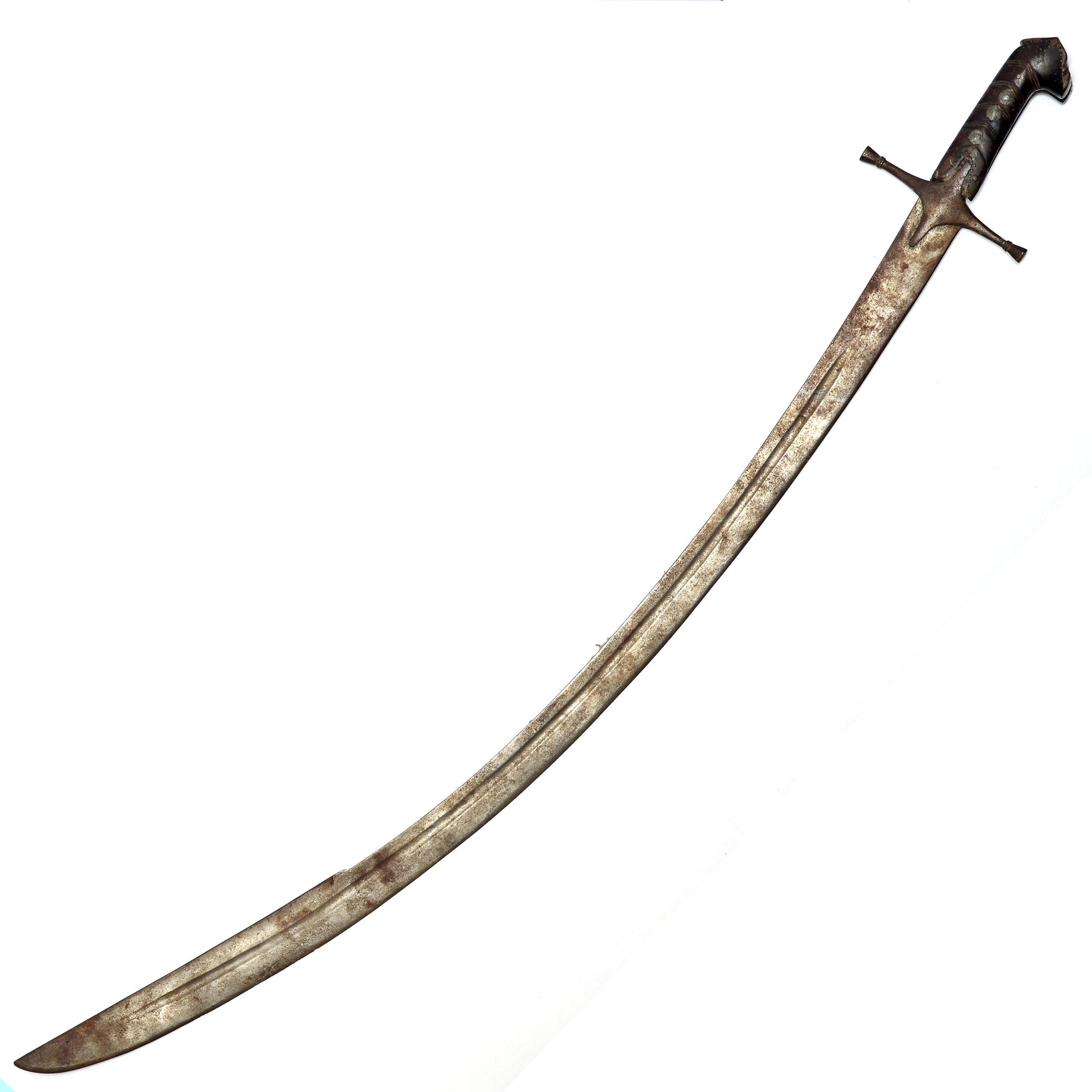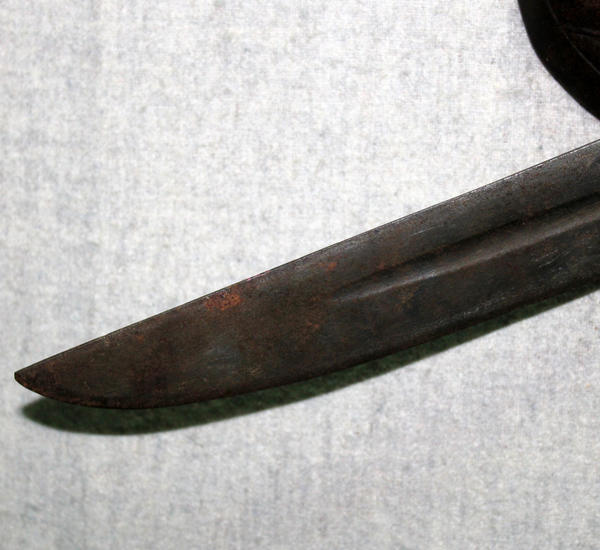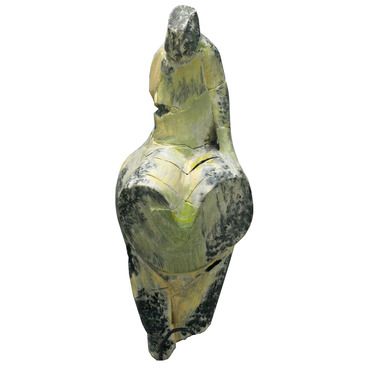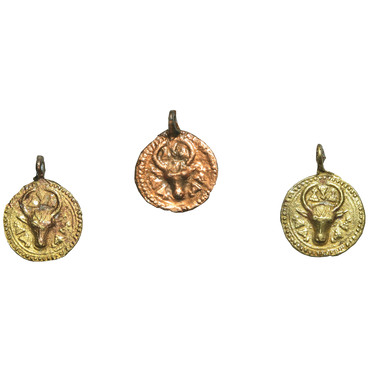The Arched Karabela Swords were spread in the 16th - 18th centuries in Russia and in Western Europe: Poland, Hungary, Moldavia. They were worn mostly by Cossacks, Russian soldiers and cavalrymen. They were most popular with Polish and Lithuanian gentry. There even existed a proverb that says: Don’t leave your home without God, and don’t leave your bed without a karabela!
The Karabela Sword
Время создания
Тhe 17th century
Размер
95x15x0,6 cm
95х15х0.6 cm
95х15х0.6 cm
Техника
Steel, forging
Коллекция
Выставка
0
Открыть в приложении#1
The Karabela Sword
#2
#4
Originally the Karabela Sword was a ceremonial weapon, rarely used in battles. The handle was ornamented with engraving and precious stone inserts, the sheath was covered with ornamental metal plates. There was practically no décor on battle swords, since décor reduced inertia and the strength of the slash, distracted the soldier and the carved handle was not convenient to hold in the hand.
The word Karabela comes from Turkish and means Black Poison. The swords were given that name because they produced the most serious and dangerous wounds. According to another version, the sword was named after the Iranian city of Karbala. The first swords of such type were forged following the form of Turkish kylych sabers, however the Karabela had a flatter arch.
#3
The blade
#5
Some of the sword blades were smoothly widened in the upper third, near the handle. This widening was called yalman. The blade was separated from the handle by a simple crosspiece with small bulbs at the ends. Such a handle would not protect the hand, therefore, a new type of sword fight appeared: the crisscross art of fighting. The Karabela was held with a sharp side up, so that the enemy weapon, having slid off the blade, would not hit the hand. When fighting the swords met crisscross, hence the name of the technique.
#6
Karabelas were lighter than hussar sabers and other arched swords of that time. They were fit for both mounted and unmounted battles. They were used in close fighting to throw straight and round slashes.
Karabelas were most often made of Turkish or Persian Steel. There were also swords made in the German city of Solingen, that was a center of manufacturing most reliable and strong blades in Europe.
#8
Рукоятка сабли-карабелы
#7
The Karabela sword was transferred to the Bryansk Antiquities Collection by the State Museum of History. It has been kept in the Bryansk State Regional Ethnography Museum since 1950s.
#9
State budgetary cultural institution Bryansk State Regional Ethnography Museum
читать дальшескрыть
00:00
00:00
1x
The Karabela Sword
Время создания
Тhe 17th century
Размер
95x15x0,6 cm
95х15х0.6 cm
95х15х0.6 cm
Техника
Steel, forging
Коллекция
Выставка
0
Открыть в приложении
Поделиться




